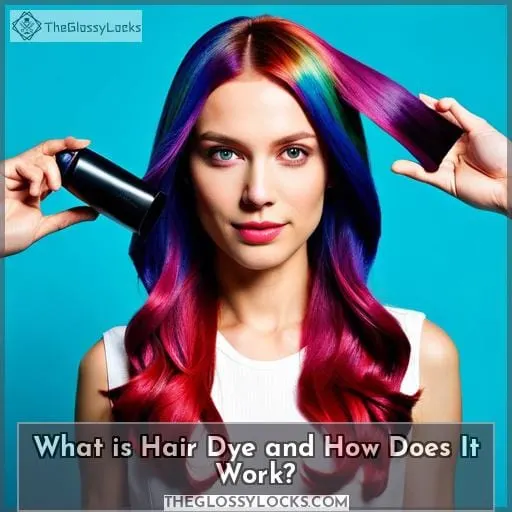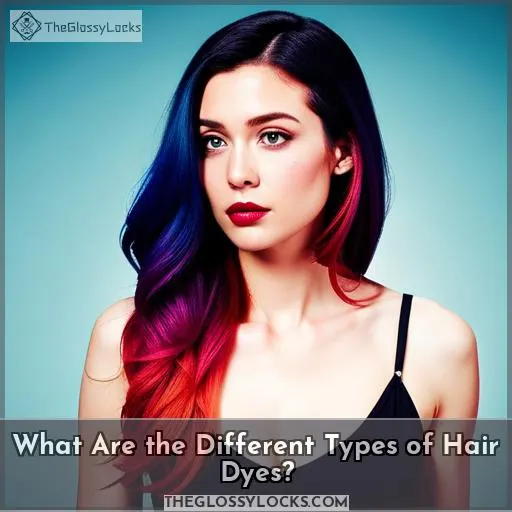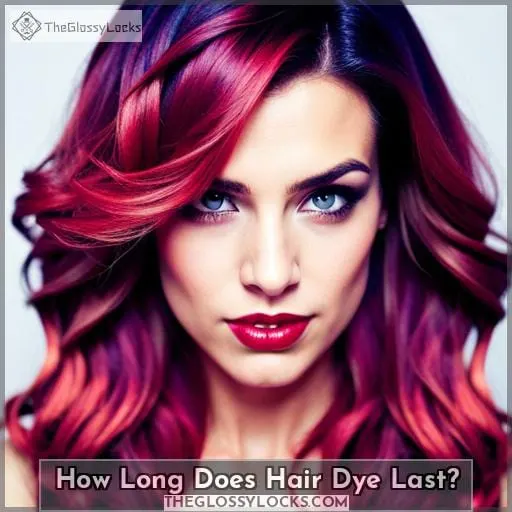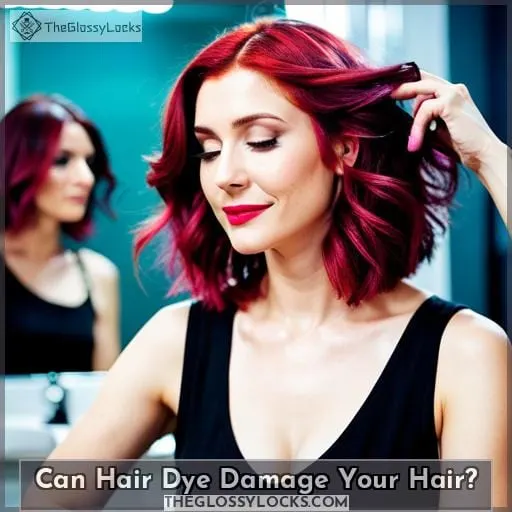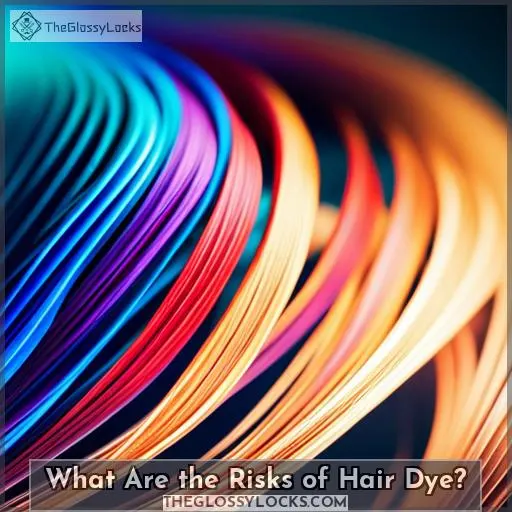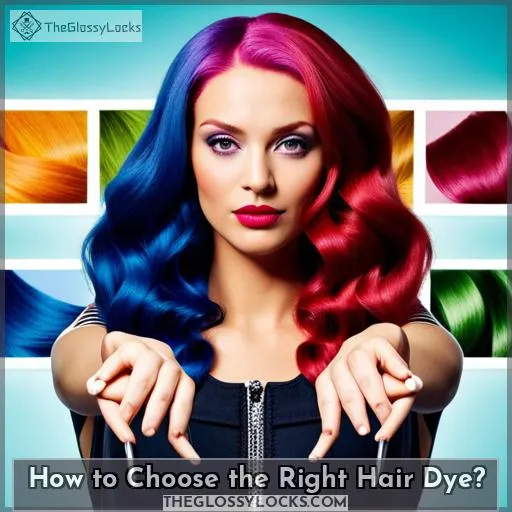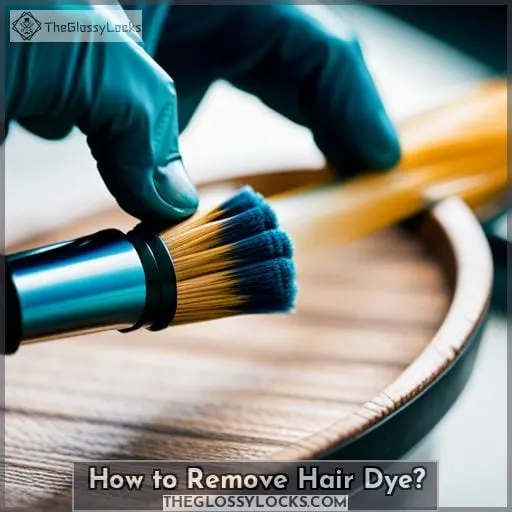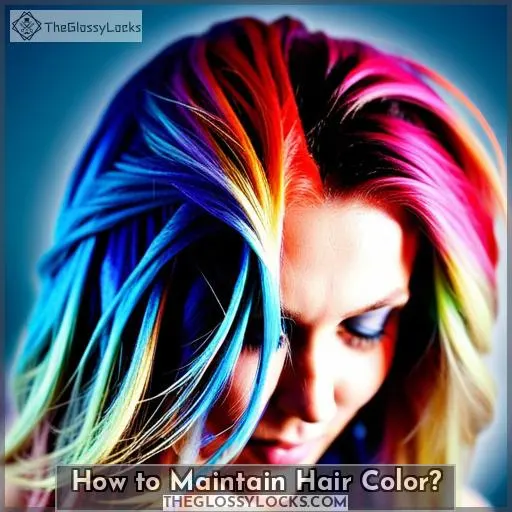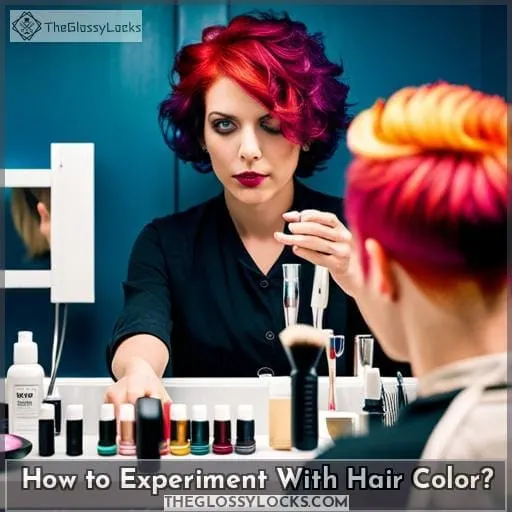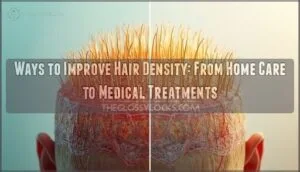This site is supported by our readers. We may earn a commission, at no cost to you, if you purchase through links.
Do you ever look at someone with great hair and wonder how they got it so perfect? You may be surprised to learn that the answer is likely hair dye.
Don’t worry if not; we’ve got all the information you need right here! From understanding different types of dyes available on the market today, to knowing which one works best for your unique needs – this guide will help make sure every time you use a product or visit a salon, you can do so confidently.
Table Of Contents
- Key Takeaways
- What is Hair Dye and How Does It Work?
- What Are the Different Types of Hair Dyes?
- How Long Does Hair Dye Last?
- Can Hair Dye Damage Your Hair?
- How to Use Hair Dye Safely?
- What Are the Risks of Hair Dye?
- How to Choose the Right Hair Dye?
- How to Remove Hair Dye?
- How to Maintain Hair Color?
- How to Experiment With Hair Color?
- Frequently Asked Questions (FAQs)
- Conclusion
Key Takeaways
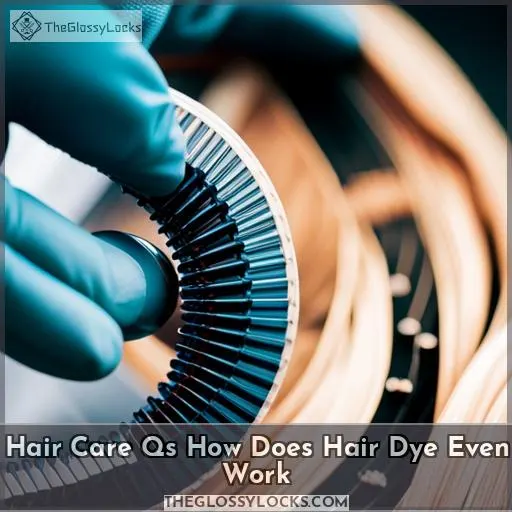
- Hair dyeing involves different types of dyes, such as permanent, semi-permanent, temporary, and henna.
- Permanent dyes use chemicals that can increase the risk of cancer and allergic reactions if not used properly.
- Henna is a natural alternative for safe and gentle coloring without the risk of cancer exposure.
- Hair dye safety is important, and precautions such as patch tests and consulting with a doctor should be taken to avoid potential risks.
What is Hair Dye and How Does It Work?
You may have heard of permanent, semi-permanent, temporary, and henna hair dyes. But do you know what they are or how each works?
Permanent hair dye uses chemical compounds to penetrate the shaft of your hair, permanently changing its color.
Semi-permanent dyes don’t penetrate as deeply and last a fraction of the time that permanent does.
Temporary tints usually come in spray form with pigments that stay on your strands until they’re washed out.
Henna offers an all-natural alternative for coloring gray hairs or giving yourself a subtle boost in hue without any harsh chemicals!
Let’s take a closer look at these different types of dye so you can make an informed decision about which one best suits your needs.
Permanent Hair Dye
When it comes to permanent hair dye, you have to be prepared for lasting chemical changes. It is known that darker dyes increase the risks of some cancers and can cause allergic reactions or hair loss.
Semi-permanent Hair Dye
You can experiment with semi-permanent hair dye to add a splash of color to your look without the long-term commitment. These dyes only coat the outer layer of hair strands with large color molecules, so they don’t penetrate as deeply as permanent dyes and won’t last as long.
The fading process generally takes 10-12 washes, but this depends on factors such as how often you wash your hair and which type of dye you use.
| Pros | Cons | Tips |
|---|---|---|
| Can try new colors without commitment | Doesn’t last very long compared to other types | Use a sulfate-free shampoo for longer-lasting results |
| No need for developer or mixing | Might not show up well on darker colored natural hairs | Avoid using hot water when washing hair |
Semi-permanent dye is gentler than most other types since it doesn’t contain ammonia or peroxide, making it safer for those who are allergic to chemicals found in traditional box dyes. Before applying any product that includes semi-permanent, you must perform an allergy test because some people have allergic reactions from PPD (para-phenylenediamine) contained in these products.
Temporary Hair Dye
Experience the freedom of a new look with temporary hair dye, which offers an easy way to switch up your style without a long-term commitment. Temporary dyes coat the outer layer of the cuticle and last for 10-12 washes. They’re perfect for color experimentation and protection from sun fading! Additionally, natural dyes like henna provide safe application with no risk of cancer exposure.
Henna Hair Dye
Transform your look with a natural dye like henna, which coats the hair for vibrant color without any risk of cancer. Henna is an ancient type of hair dye made from plants that has been used for centuries to provide a rich and lasting color to grey hairs.
It’s safe and gentle on the scalp, although it may cause allergic reactions in some people.
DIY tips include mixing henna powder with lemon juice or water, applying it evenly over clean dry hair, covering your head with plastic wrap or a shower cap, and leaving it on overnight before rinsing thoroughly in lukewarm water.
Home remedies can also be used as alternatives, such as using herbal teas instead of store-bought products.
Choose henna for beautiful natural color today, with its many pros and cons plus various color options available.
What Are the Different Types of Hair Dyes?
There are a variety of hair dyes available, ranging from permanent to temporary and natural options, all of which can change your look in different ways. Coloring vs. bleaching is an important distinction when it comes to dyeing, as bleaching typically involves using harsher chemicals than coloring does.
Permanent dyes penetrate the cuticle layer, while semi-permanent only adds tone to the outer layer, and temporary coats the surface with large molecules. Benefits such as covering grey hairs or changing up style come hand in hand with risks like weakened structure or allergic reactions due to chemical exposure.
Therefore, it’s important for those considering personal hair dye use to research their options before application.
Natural alternatives such as henna also exist but do not offer radical color changes unless combined with regular store-bought products that contain synthetic formulas, including ammonia and peroxide. These should be used cautiously given potential safety concerns related to cancer risk factors associated with long-term exposure over time.
Ultimately, there are three main types of hair dyes: temporary, semi-permanent, and permanent (oxidative), each having its own advantages depending on the desired outcome.
How Long Does Hair Dye Last?
You can expect your new hair color to last different amounts of time depending on the type of dye you use. Permanent dyes will typically provide longer-lasting coverage, but may cause damage to your hair if used incorrectly or too often.
Semi-permanent dyes will usually last around 10-12 washes and tend not to fade as quickly as temporary colors do – great for those who want more control over their look!
Temporary dyes are good for special occasions and can be easily removed with shampoo, but they won’t offer any long-term protection from color fading or gray hairs showing through.
Henna is a natural dye that coats the surface of strands without penetrating deep into them. It provides limited coverage options but also carries fewer cancer risks than other types of chemical hair dye products.
If you’re looking for something more dramatic, permanent oxidative dyes produce lasting results by altering the structure of each strand.
With any type of coloring product, remember skin protection is key. Using Vaseline around areas like ears and neck helps keep irritation at bay during application and removal processes alike.
Can Hair Dye Damage Your Hair?
Using hair dye can be a great way to switch up your look, but it’s important to consider the potential damage it may cause. Depending on the hue variations and dyeing technique you choose, color fading or breakage could occur.
Permanent dyes contain ingredients such as aromatic amines, which are known to have adverse effects on our hair health if used in excess quantities over time. Studies have looked into a possible link between these types of chemicals and various forms of cancer, though not all findings are conclusive yet.
The best approach when considering using a new hue would be researching its safety beforehand through organizations like the Food & Drug Administration (FDA).
Temporary dyes tend to coat only the surface of each strand of our hair, so there’s less risk of damaging them.
How to Use Hair Dye Safely?
Before experimenting with hair dye, it’s important to take the necessary safety measures to protect your locks. Hair dye is a complex chemical process that can cause significant damage if not properly used.
- Choose a high-quality product and consider selecting one of the more natural options such as henna or vegetable-based dyes for less sensitivity and fewer chemicals.
- Test any new shade on an inconspicuous area before full application, especially when using permanent shades which are difficult to remove without professional help.
- Wear gloves during application and wash off immediately after the recommended time period given in instructions has elapsed; temporary washes should be washed out shortly after each shampooing session while semi-permanent dyes will gradually fade away over 10-12 washes but may require additional removal steps depending on original color choice.
- Be aware of potential allergic reactions by conducting skin tests prior to use – many people have sensitivities even when following all directions correctly!
With knowledge about chemical safety, understanding personal hair sensitivity levels, choosing quality products carefully according to desired results (e.
What Are the Risks of Hair Dye?
You may already be aware that hair dye carries some risks, such as the risk of cancer, allergic reactions, and potential for hair loss. While many people color their hair without incident or harm, it’s important to understand the possible consequences of using this product before making a decision.
To help you decide whether or not dyeing your own locks is worth the risk, let’s take a closer look at what might happen when using hair dye.
Cancer Risk
Research has found that people exposed to hair dyes at work have a small but consistently increased risk of bladder cancer – up to 7 times higher than those who are unexposed. Hair dye ingredients may be linked to various cancers, such as Non-Hodgkin Lymphoma in lab studies; however, this has yet to be confirmed by US regulations.
Henna hair dye is plant-based and does not contain the same chemicals as other types of dyes. Consumers should research product labels before use since darker shades tend to pose greater risks from extended exposure.
Allergic Reactions
Be aware that using hair dye can cause allergic reactions, such as itching, burning sensations, hives, and swelling. Those with skin irritation or chemical sensitivities may be at higher risk of developing a dye allergy.
Contact dermatitis is also possible due to the chemicals in hair dyes, which could lead to hair breakage.
Henna-based products are generally considered safer than temporary dyes but should still be used cautiously. The National Toxicology Program has classified some of its components as potential carcinogens.
Lab-based studies have also raised concerns about other ingredients found in commercial hairsprays and tints, according to an American Cancer Society report.
Hair Loss
Using hair dyes could potentially cause your locks to suffer, leading to breakage and even permanent loss. At-home dyeing can be tricky as it is difficult to maintain the correct proportions of colorants.
Hair preparation prior to dyeing may also affect results, including fading due to exposure from chemical treatments or natural environmental elements such as sun and seawater. Additionally, using too strong chemicals or incorrect combinations of colorants can damage the hair shafts permanently.
Consider choosing natural alternatives like Henna for coloring grey hairs or temporary dyes when experimenting with colors without harming your scalp too much – a recommendation made by the International Agency for Research on Cancer (IARC).
How to Choose the Right Hair Dye?
Now that you know the risks of hair dye, it’s important to understand how to choose the right product for your needs.
- Hair Dye Safety: Look for products with fewer chemicals. Some natural or vegetable-based alternatives may be safer than harsh chemical dyes.
- Hair Dye Alternatives: Henna hair dye can provide color without damaging effects, while temporary dyes are less destructive but don’t last as long as permanent ones.
- National Toxicology Program (NTP): Research NTP findings on specific ingredients in different brands of hair dye before use.
- Chemical Changes: Permanent dyes cause lasting changes in the structure of strands and should only be used if the desired effect is necessary. Darker colors require more processing time, so consider strength/length limitations carefully during the application process.
- Hair Dye Application & Maintenance: Make sure instructions are followed correctly when applying and maintaining new color. Read warnings carefully regarding potential allergic reactions prior to use! With proper care after each treatment, you can extend the longevity of your hue while reducing the risk associated with certain types of dyes or application techniques. Be aware that even safer options will require periodic reapplication due to fading over time from UV exposure or shampooing, which removes protective coatings from strands.
Keeping this information in mind, along with any additional concerns such as allergies, will help determine what type and brand best suits individual needs safely.
How to Remove Hair Dye?
It can be difficult to get rid of hair dye once it’s been applied, so make sure you take the necessary steps to ensure successful removal. Hair dye can fade with time and in the sun, but if you want more immediate results, there are a few ways to remove color from your hair safely.
Depending on whether or not your dye is permanent or semi-permanent, it will determine what works best for fading out the color. For temporary dyes that sit only on the surface of the hair strands, a clarifying shampoo may do wonders in stripping away excess pigment quickly and easily without damaging your locks too much.
Henna-based dyes require an ammonia-free bleaching process as they cannot be removed with regular shampoos due to their long-lasting nature. This is something that should always be done by a professional hairdresser who knows how to handle removing such strong pigments safely.
If chemical safety is important, then natural alternatives like lemon juice, vinegar, baking soda, and chamomile tea could all help lighten unwanted hues gradually over time while also providing some nourishment for damaged tresses caused from coloring.
A federal court order requires manufacturers of at-home box dyes (like those found at drugstores) to include multiple warnings about possible risks associated with using these products, which include cancer risk factors.
Before deciding upon any method, however, it’s best to seek out expert opinion first before trying anything yourself as DIY haircare rarely ever ends well!
How to Maintain Hair Color?
To maintain your hair color, it’s important to consider how often you wash and style your hair, and how the products or techniques used will impact its vibrancy. Understanding what type of dye has been used is also crucial in order to properly care for colored hair.
Permanent dyes contain tiny color molecules that penetrate into the cortex layer of each strand, while semi-permanent dyes only cover the outer cuticle layer, and temporary dyes simply coat it with a film.
To protect dyed hair from fading, it’s best to avoid overwashing your locks, as this strips away natural oils that help seal in color. Using sulfate-free shampoos specifically designed for colored hair can also help preserve the hue.
Root touch-ups are necessary if permanent color has been applied, to ensure that no greys peek through between salon visits. However, at-home box colors may not be strong enough, so it’s best to ask a professional stylist about available options.
This is due to the risks associated with some types of blood cancers related to prolonged use by people’s exposure over time when breathing fumes released during application processes involving certain ingredients found in many commercial brands.
Henna-based products are an ideal choice, as they are all-natural yet still provide adequate coverage without harsh chemicals. They also add shine, making them increasingly popular nowadays amongst health-conscious individuals wanting gorgeous, lasting results minus any potential harmful effects encountered along the way.
How to Experiment With Hair Color?
You can experiment with hair color using temporary, semi-permanent, or permanent dye to add tone and cover gray hairs.
For a fun and vibrant look, try out some color blocking techniques or rainbow dyes for extreme effects. Dip dyes are also great if you want subtle ombre shades that blend in naturally with your existing hair hue.
Henna Hair Dye is popular too as it’s a natural plant-based product that coats the surface of each strand, creating an even result without damaging the cuticle layer like other types of dye can do.
The National Toxicology Program and International Agencies have found certain chemicals used in hair colorants could be linked with an increased risk for cancer development. So, use them responsibly and ensure safety guidelines by Centers for Disease Control (CDC) are followed closely when experimenting at home.
Frequently Asked Questions (FAQs)
Is it safe to use hair dye on a pregnant woman?
It is not recommended for pregnant women to use hair dye as it may contain certain chemicals that could be a risk factor for various types of cancer. Allergic reactions are possible, and it is important to use gloves when applying the dye.
It is best to consult with your doctor before using any new products while pregnant.
Are there any natural alternatives to hair dye?
Yes, there are natural alternatives to hair dye. You can try henna or vegetable-based dyes for safer results. Henna provides color on the surface of hair strands and won’t cause damage like permanent dyes can.
Vegetable-based products offer more vibrant colors that last longer than temporary dye without harsh chemicals.
How often should I dye my hair?
Dyeing your hair is like painting a canvas: too often and the colors will start to run together.
Can I dye my hair at home?
Yes, you can dye your hair at home. However, it is important to carefully follow the instructions on the box and perform a patch test for allergic reactions before use. Wear gloves during application and rinse your scalp thoroughly afterwards. Additionally, ensure that the product is kept out of reach of children.
Does hair dye work on all hair types?
Yes, hair dye can work on all hair types. Permanent and semi-permanent dyes penetrate the cuticle layer of the cortex, while temporary dyes coat strands. Henna is a natural alternative that sits only on top of individual strands for lasting color.
Conclusion
You’ve come to the end of your journey with hair dye. You now know that it can be a great way to experiment with color and style, but it also comes with risks. To ensure your safety, use hair dye as directed, follow the package instructions, and look out for signs of allergic reactions.
With the right precautions, you can have fun and be creative with hair dye without any risks. Just remember that hair dye can be permanent, so you should be prepared for the consequences. With the right hair dye, you can be sure to achieve the look you desire without putting your hair and health at risk.

